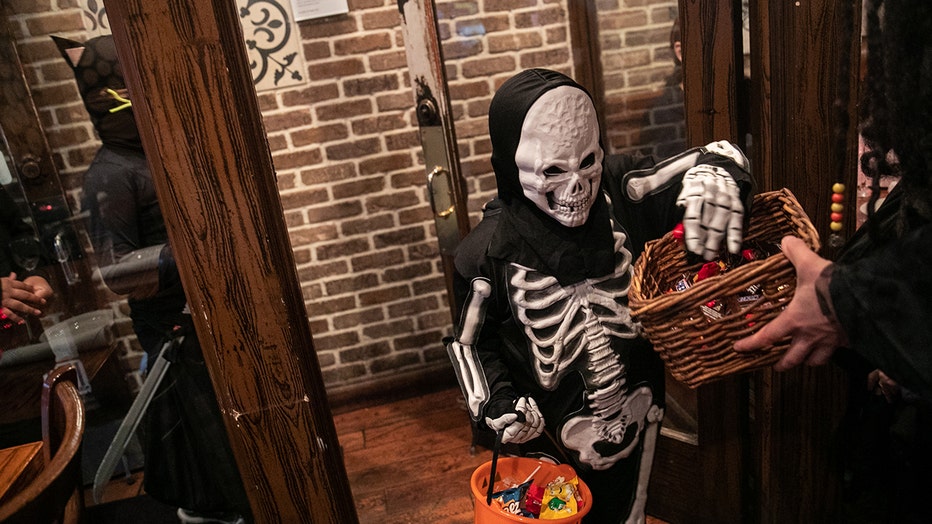Washing Halloween candy wrappers will reduce COVID-19 risk, researchers find
LOS ANGELES - How risky is trick-or-treating during the coronavirus pandemic, and how safe is the candy?
According to researchers at the University of California, the risk of contracting COVID-19 from Halloween candy could be reduced to near zero if candy givers wash their hands and wash the candy packaging with dish soap, a new study found.
Researchers enrolled 10 recently diagnosed asymptomatic or mildly/moderately symptomatic COVID-19 patients to handle typical Halloween candy (pieces individually wrapped) under three conditions: normal handling with unwashed hands, deliberate coughing and extensive touching, and normal handling following handwashing.
RELATED: CDC Halloween guidelines names trick-or-treating among 'high-risk' activities
The candy was then divided into two treatments -- no post-handling washing (untreated) and washed with household dishwashing detergent.
According to the report, published in mSystems, treating candy packaging with dishwashing detergent reduced the viral load by 62.1% in comparison to untreated candy.

Children go trick-or-treat at a restaurant on Halloween, October 31, 2019 in New York City.
“Even in the most extreme case, with candy deliberately coughed on by known COVID-19 patients, viral load was reduced dramatically after washing with household detergent,” the study authors wrote. “We conclude that with reasonable precautions, even if followed only by either the candy giver or the candy recipient, the risk of viral transmission by this route is very low.”
While the risk of COVID-19 transmission from candy is low, researchers noted that the viral load can be reduced to near zero by the combination of handwashing by the infected patient and a one-minute detergent treatment after collection.
“Here we demonstrate that these risks can be mitigated by ensuring that prior to handling candy, the candy giver washes their hands, and by washing collected candy with household dishwashing detergent,” the study authors said.
An important limitation of this experiment is that the researchers only studied viral RNA, not infectious particles, the study noted.
Researchers initially planned to use bleach but found that it sometimes leaked through some of the candy wrappers, making it unsafe for this type of cleaning use.
RELATED: CDC's Thanksgiving guidelines say gatherings should be small, parades considered high-risk
Because the primary risk at Halloween is droplet or airborne transmission from other people, the Centers for Disease Control and Prevention recommends social distancing, hand washing, distanced pickup of candy, and, of course, masks.
"The main risk is interacting with people without masks, so if you are sharing candy, be safe by putting it in dish where you can wave from six feet away," co-senior author Rob Knight, PhD, professor and director of the Center for Microbiome Innovation at UC San Diego said.
In September, the CDC released official guidance for celebrating Halloween amid the coronavirus pandemic, and trick-or-treating was among the activities that was discouraged.
The agency ranked a number of popular Halloween activities by their level of risk, and several of the most popular activities, including the participation of traditional trick-or-treating where treats are handed to children were considered to be the most dangerous.

